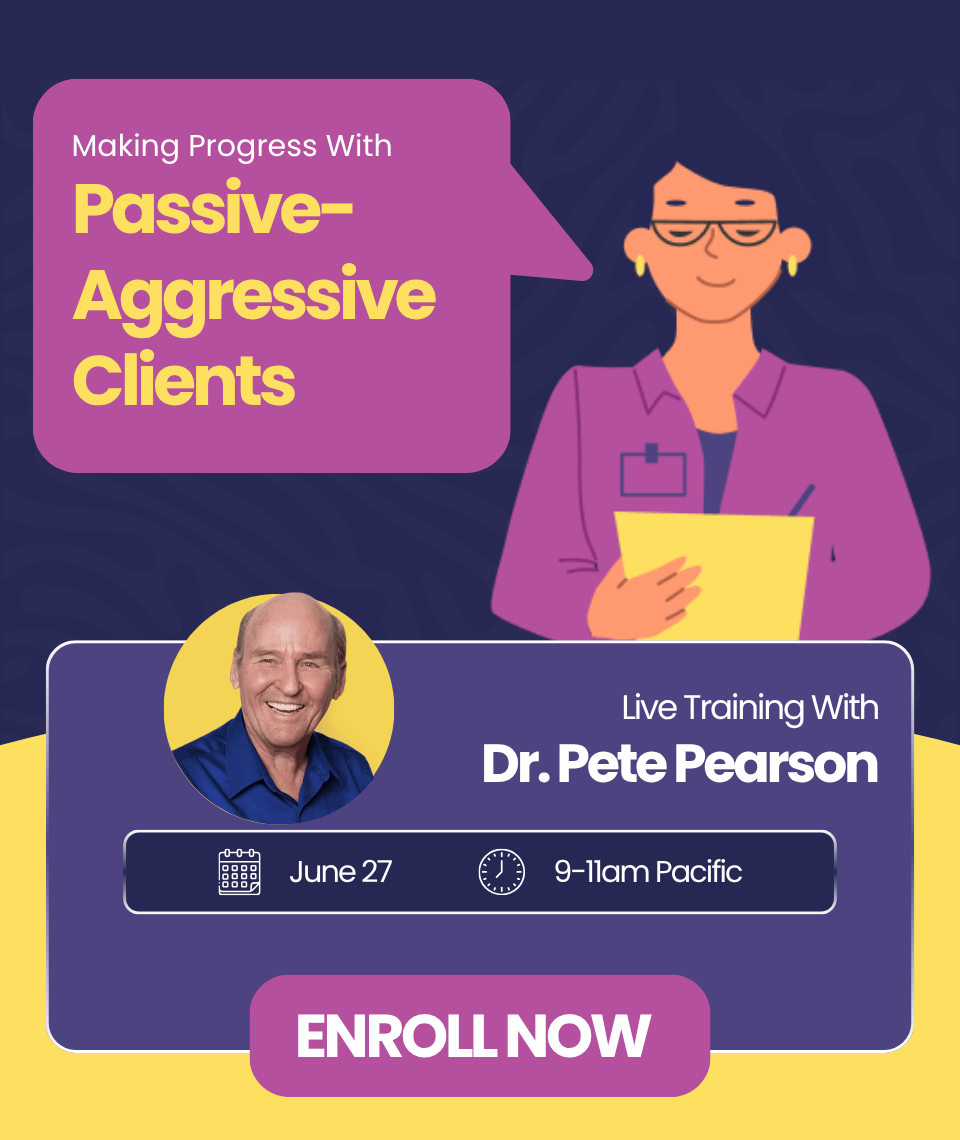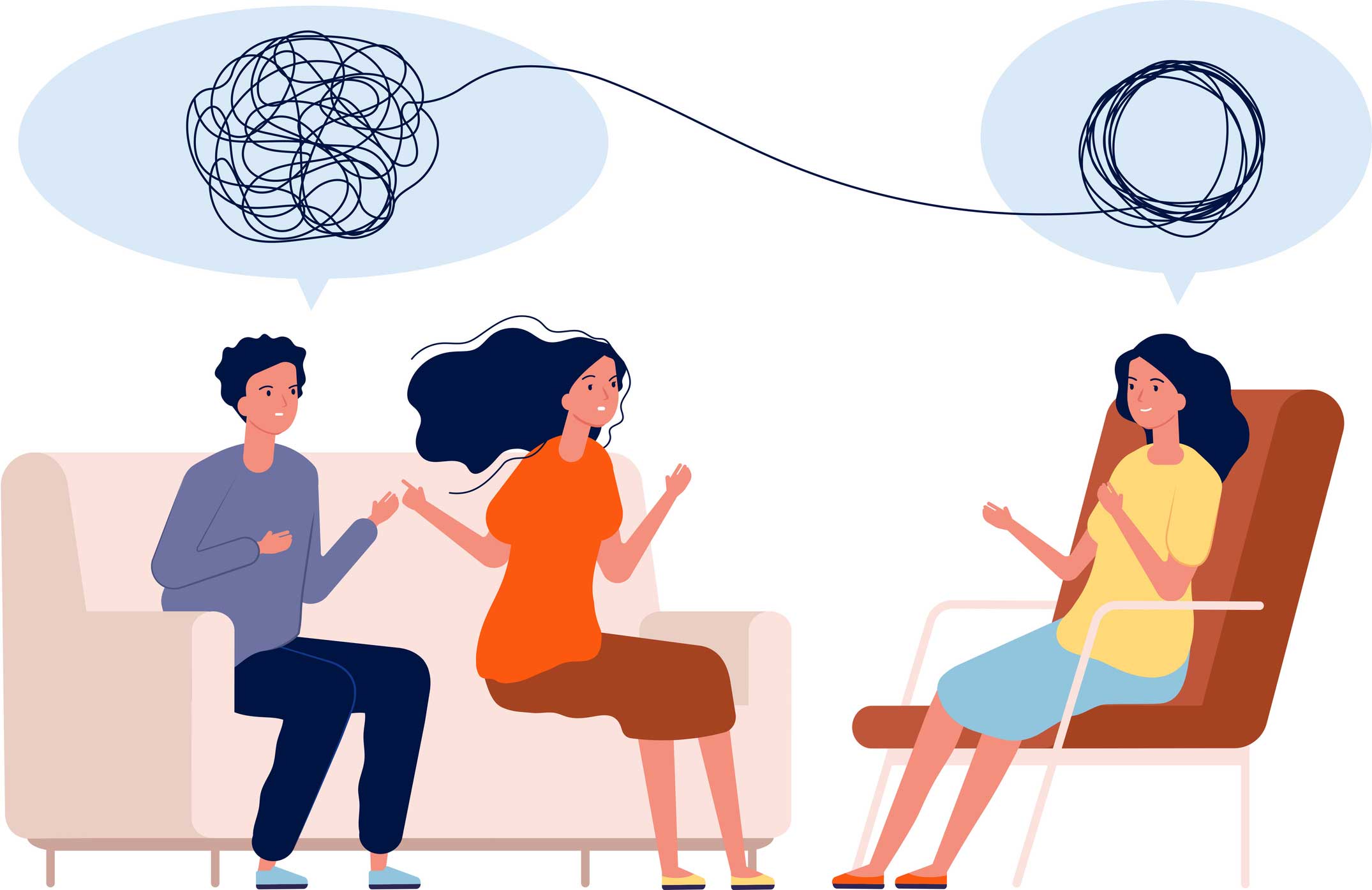In a recent training session, an experienced therapist presented a case about working with a heterosexual married couple who were deeply enmeshed with one another.
Both partners handled many aspects of their lives in a positive way, but their relationship was filled with misunderstandings, resentments, and distance. They lacked clear boundaries and healthy ways of expressing their individual views and desires. The slightest hint of conflict sent ripples of tension, defensiveness, and fear into them, making it nearly impossible for their therapist to get at the deeper issues in their marriage.
Their therapist felt clear that the Developmental Model could be used to help this couple. She decided to use the Initiator-Inquirer (I-I) process to help both partners develop a stronger sense of self.
A brief look at how the I-I technique works
If you’re new to Initiator-Inquirer or it’s been awhile since you actively applied it, here’s a 4-step summary for using it. If you are very familiar with this process or use it frequently, skip to the example below.
1. Education. Start by taking time to explain how the I-I process can help each partner learn more about themselves and each other. Emphasize that healthy relationships contain two confident individuals who know each other well and appreciate each other’s differences and unique perspectives.
2. Structure. Next, clearly lay out the Initiator and Inquirer roles, explaining that your objective will be to help each partner stay in their own role as the conversation moves forward.
3. Breakdowns. In successive sessions, the I-I technique will give you the opportunity to witness where each partner gets stuck. You will be able to identify chronic breakdowns and intervene actively to help the couple address these with confidence.
4. Promote differentiation. Throughout the couple’s work, you will offer targeted assists that promote healthy interaction. You’ll observe where the I-I roles break down, noticing when it’s hard for partners to manage emotions, listen with engagement, or stay open. You will help them become more self reflective and offer generous praise for each step they take toward greater self awareness.
How each role in the I-I process works
The Initiator’s role requires this partner to:
-
Choose one topic for discussion, staying only with that topic so they don’t flood their partner with multiple issues.
-
Say what they think and feel about the chosen topic without blame or shame, focusing on their own feelings and beliefs without getting entangled in assumptions about what their partner might (or might not) think or feel.
-
Share honestly and openly, offering their partner a chance to understand them better as they learn more about themselves, too.
The Inquirer’s role is to:
-
Listen to the Initiator without defending, arguing, cross-complaining, or personalizing what they hear.
-
Recap what they’ve heard without adding their own views or interpretations.
-
Ask questions that show genuine curiosity and interest. A successful Inquirer will draw their partner out and help them feel safe in sharing their innermost thoughts and feelings.
A real-life example reveals how the I-I works
A therapist presented a case in training that revealed the value of I-I in helping couples create an open, healing dialogue. (All names have been changed to protect the privacy of the participants.)
After meeting with a couple for several sessions, the therapist, Joan, introduced the I-I process. She selected Kathy, the wife, to be the Initiator in the couple’s next session. Joan planned an approach that would set a warm, encouraging tone. She knew that jumping into the exercise too quickly could set Kathy and her husband, Keith, up for failure – so she resolved to observe her own pace and be sure she did not rush.
Joan also reminded herself to stay steady and maintain strong leadership to shift this couple’s dysfunctional dynamic. She’d already seen that Kathy and Keith were highly reactive and deeply enmeshed, so Joan would need to maintain confident control, requiring each partner to stay within their assigned role.
Joan had seen Kathy fall into the habit of imagining what she thought Keith’s position would be on any given issue, giving herself up, and substituting his point of view for hers. With this in mind, Joan asked Kathy to recall a time when she enjoyed Keith’s company – while making sure she was expressing only how she (not Keith) felt in that moment.
When Kathy wandered away from her own thoughts and feelings, Joan would gently redirect her: “Let’s focus on you for now. Tell us more about how this very happy time felt for you.”
Joan offered consistent guidance to help Kathy resist the urge to make assumptions about Keith’s opinions, feelings, and wishes. This intrusive habit made Keith uncomfortable, causing him to retreat into protective silence. This would cause Kathy to flood the room with emotional appeals as she fought to bring Keith back – a move that only made him shrink back even further.
How each partner gained ground, little by little
Joan worked with Keith to help him learn how to be an effective Inquirer. When Kathy would launch a barrage of questions or accusations at him, Joan would intervene, reminding her to stay within the boundaries of her role. This helped Keith relax and feel safe enough to listen longer and share more of himself when he took his turn as Initiator.
Keith’s tendency to put up a wall when Kathy became emotional or anxious reflected his lifelong attachment style. At one point, he even asked Joan: “Why should I open up to Kathy when it always ends up hurting me?”
“That’s a great point,” Joan responded. “I hope you’ll remember this question, because when you are the Initiator, you can describe how you feel when she’s angry or unhappy with you. And then when she’s acting as Initiator, she can tell you how she feels when she senses you’re disappearing. This pattern isn’t working well for either of you.”
Joan’s long game: keeping her balance while fostering individual growth
Joan could see that the way this couple related to each other was causing deep pain. The I-I process helped them feel calm and safe enough to offer one another real insights – the first step toward greater empathy and understanding.
Joan could see that Kathy felt lonely and miserable, and Keith felt determined to protect himself from her invasive style of engagement. He had never let himself rely on another person, and he wasn’t about to let it happen now. Joan’s skillful interventions created the safe space that both Keith and Kathy needed to open up a little more each time.
Joan noticed that Keith would get nervous and edgy at times, especially when she praised him for progress he had made. She used one of these moments as an opening to extend herself and increase his capacity to be more open:
“You’ve told me the truth about you, Keith, and I know that’s not necessarily easy for you. My own truth is that I like to say ‘great job’ when I see someone moving in the right direction. That might feel uncomfortable to you at first, but it helps me witness what you’re doing well. Thank you for allowing me to do that.”
Back-pocket stories that ease tension and reinforce key points
As therapists, it helps to have personal stories at the ready that we can share at pivotal moments. These carefully chosen stories maintain confidentiality, preserve our leadership, and support increased differentiation.
While discussing Kathy and Keith’s difficulty with personalizing what each other said, I volunteered that I often share a story about my own mother, who saw me as fat and often criticized my weight. When I met my future mother-in-law, I was shocked when she told Pete how little she thought I was! This was an early time when I began to really understand the concept of not taking another person’s viewpoint personally. We have many “mothers” in life, all seeing us from different points of view and helping us step back to choose our own and more balanced sense of ourselves.
How long-term progress might unfold for Joan’s clients
To keep Keith and Kathy on a positive path, Joan would remind them that expressing their thoughts and feelings could bring them closer together. Keith would gradually learn that it was safe to share his opinions as Kathy learned to listen without interrupting or judging. As they practiced together, Keith’s long-standing defenses would gradually come down, allowing Kathy to see more of his real self. A new sense of closeness would develop from this highly effective way of building shared understanding and respect for each partner’s personal integrity and strengths.
Kathy and Keith’s experiences give us a deeper look at the multiple ways the Initiator-Inquirer process can be used and how it supports growth in the Developmental Model. Have you used aspects of the I-I with your clients? If so, how does it help you? Have you been afraid to try it? What support do you need to take the first step? Please share your experience in the comments below.



 We respect your privacy.
We respect your privacy.



